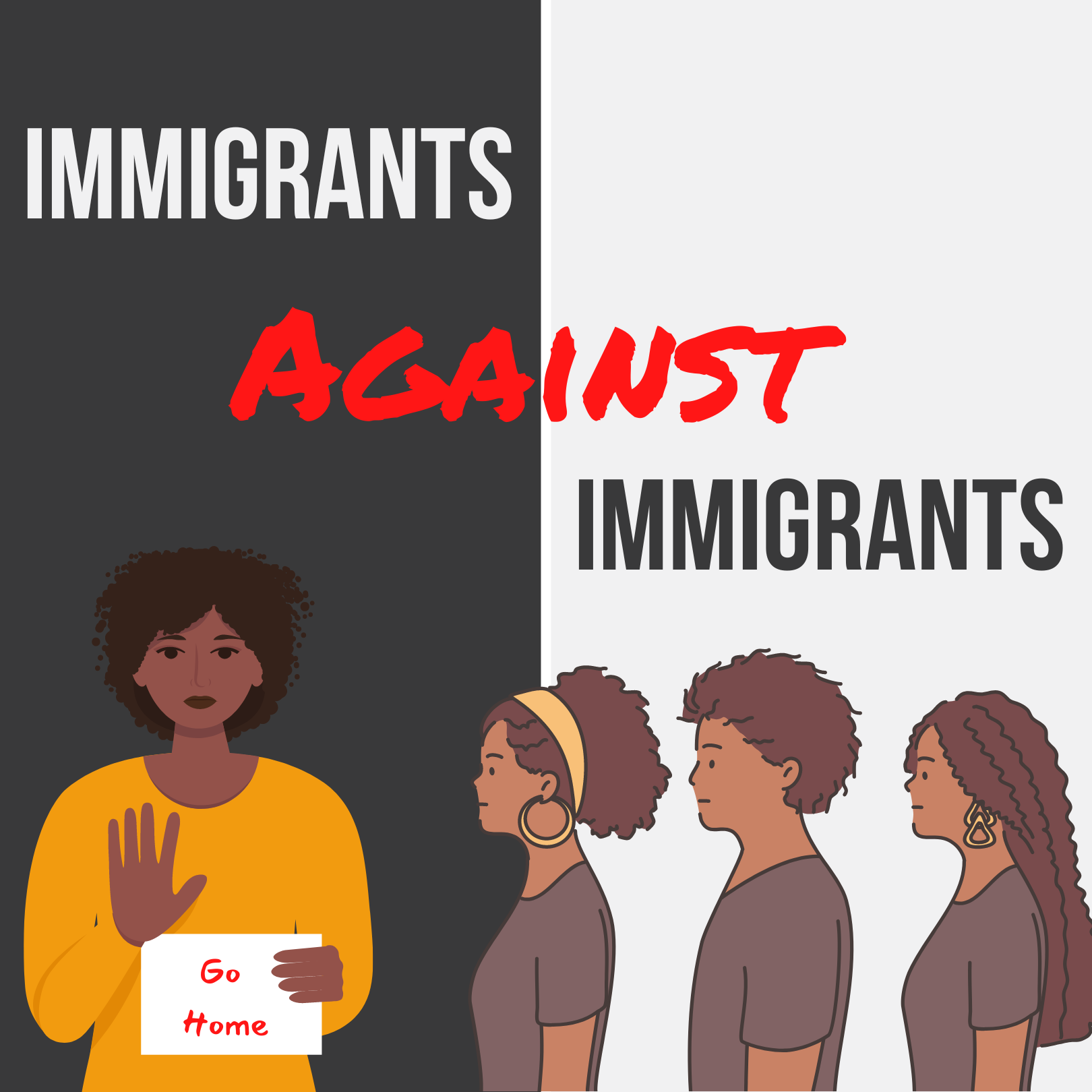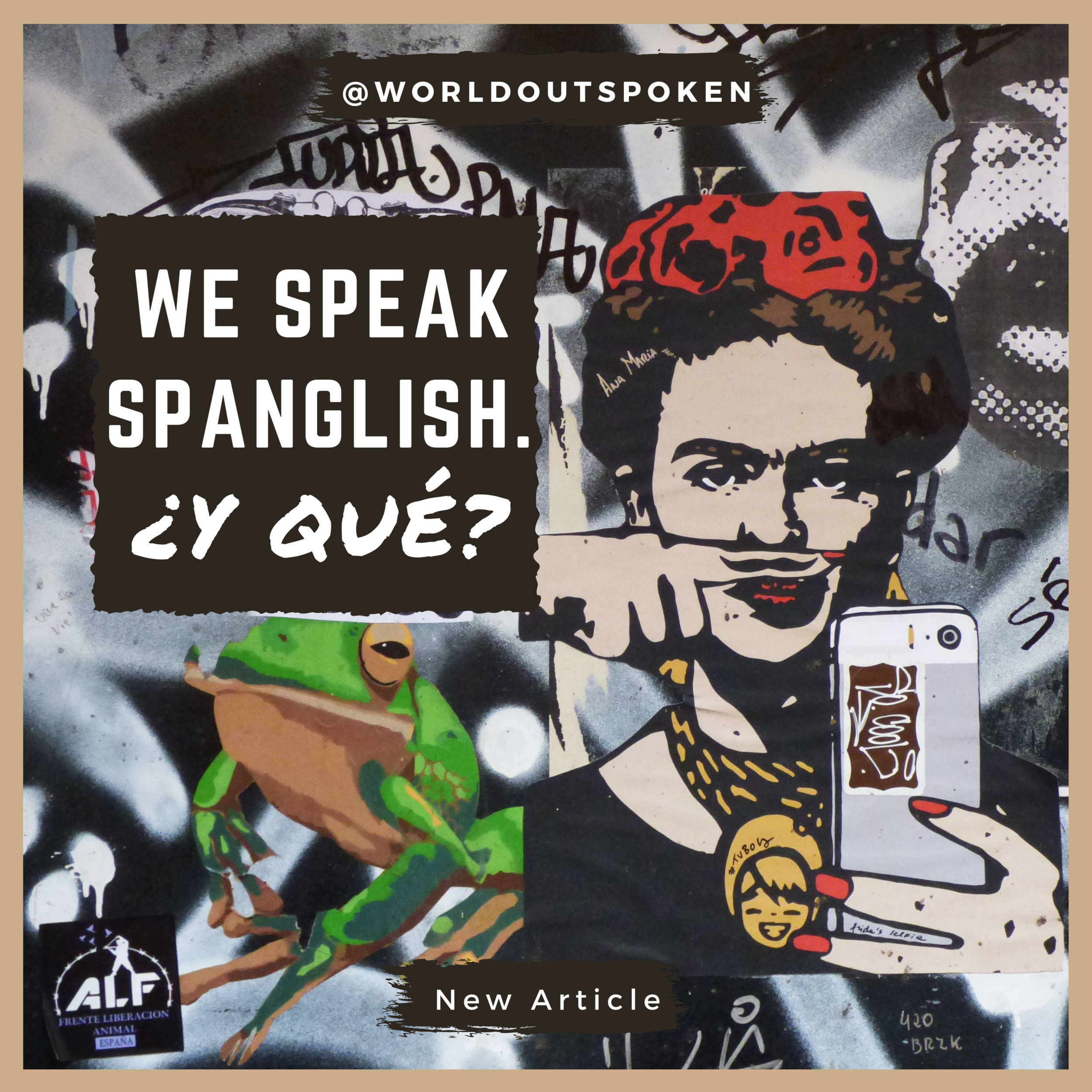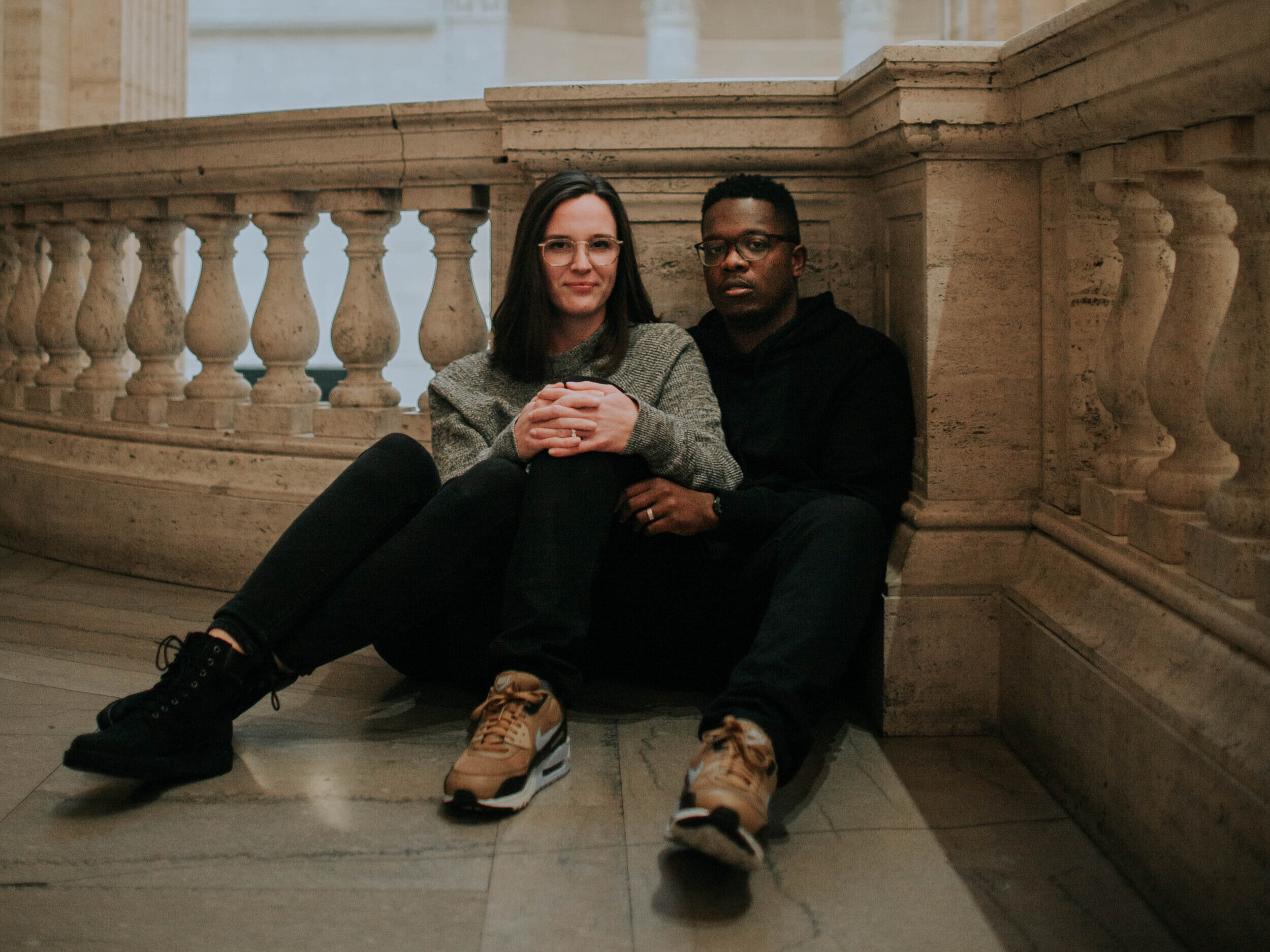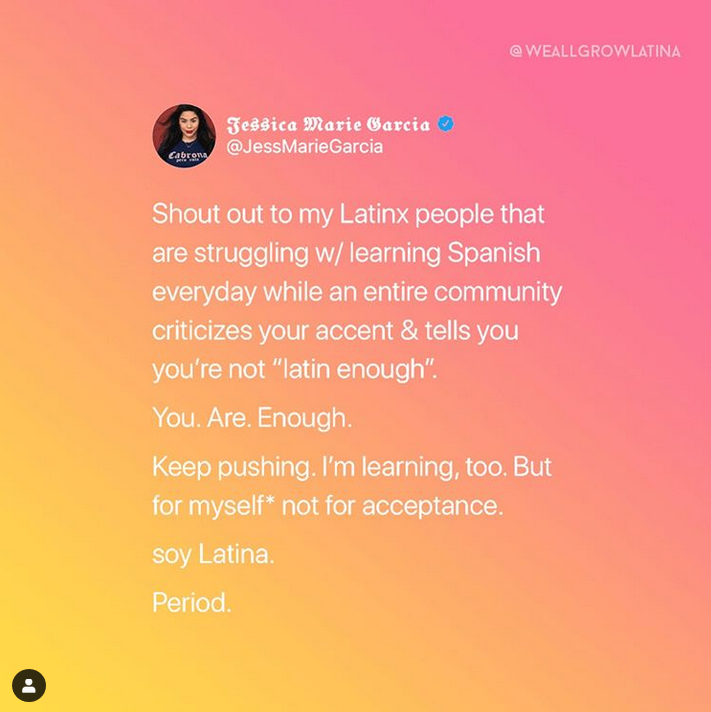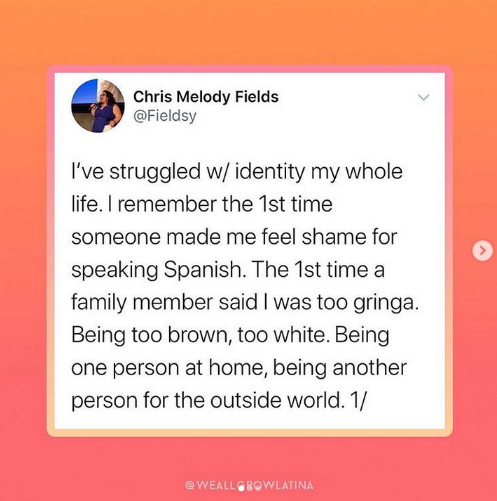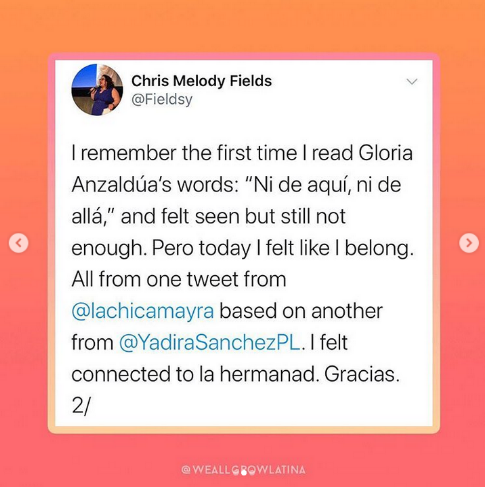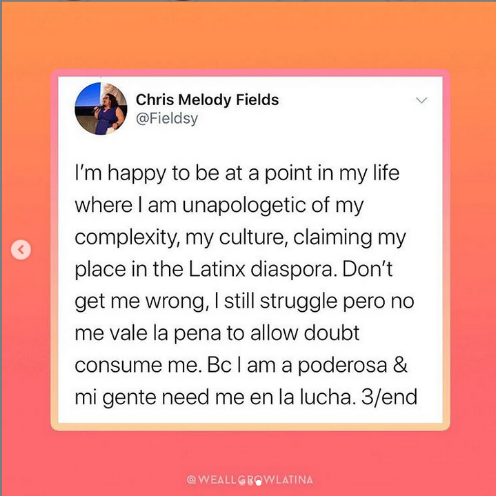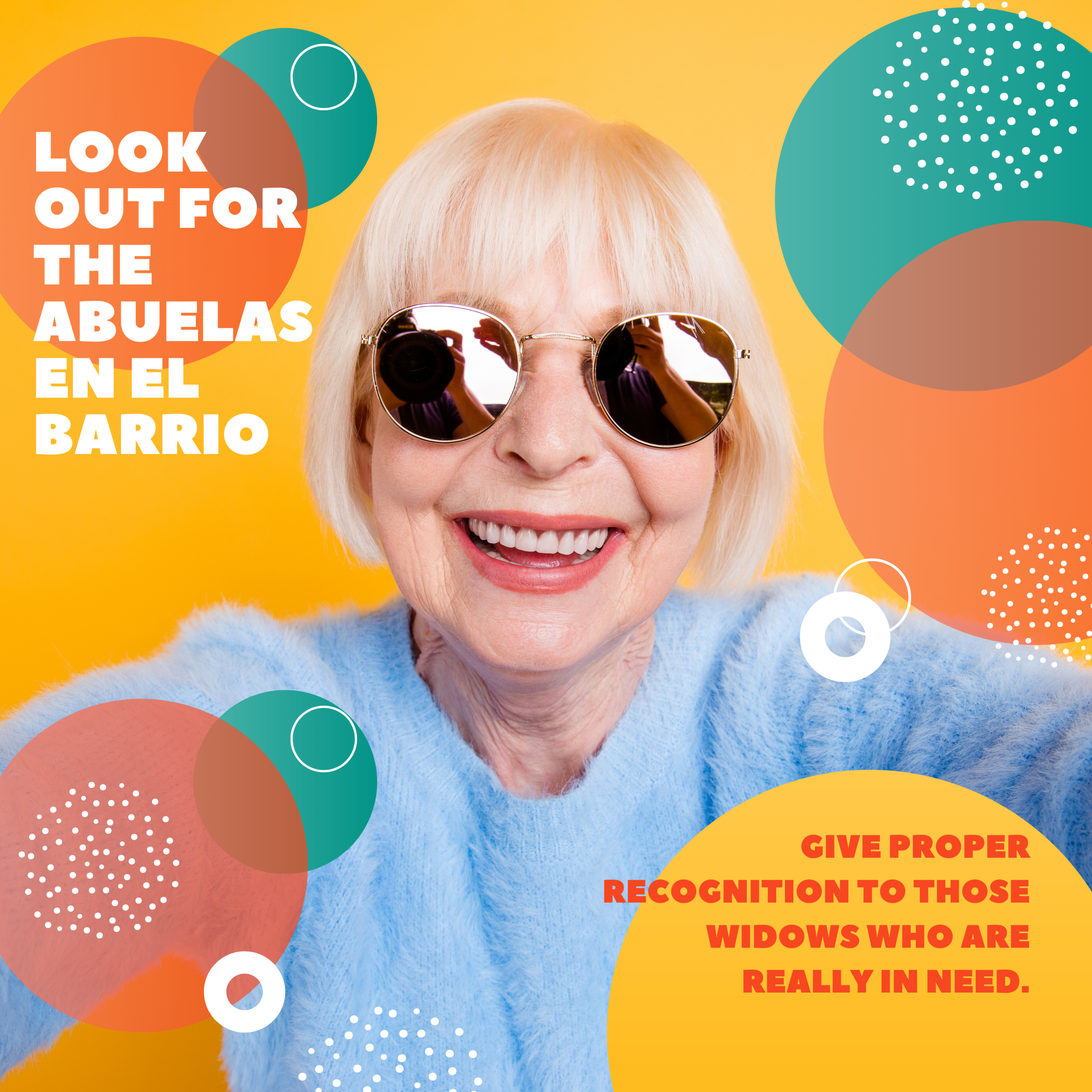In the evolving dialog on race, racialization, and identity formation, significant identity markers are reexamined. Debates emerge about how and to what degree people belong to a community identifying with a certain term. In some cases, the meanings of these terms are critiqued and corrected. On other occasions, the history of a word might inspire a movement to cancel its use, purging it from the daily lexicon. Conversations about identity are intricately tied to language. And, as one philosopher notes, the meanings of our words are fluid throughout history.[1] These evaluations of words, their histories, and their meanings have introduced a tension for World Outspoken because of our use of the word mestizo. Some young scholars recently suggest that mestizaje served its purpose, that the changed conditions in the US make the word obsolete.[2] I do not believe that is right.
A theology of mestizaje is at the center of World Outspoken. It guides the articles we write, the topics we address, and our approach to addressing them. Our mission statement makes the goal clear: to prepare the “Mestizo” church; mestizaje is without doubt a key element in the ethos of the organization. In partnership with the Association for Hispanic Theological Education (AETH), we launched The Mestizo Podcast, but as the first season of the show was nearing its end, we started receiving submissions from fans asking, “By calling the show, The Mestizo Podcast, are you erasing Afro-Latinidad? How am I, an Afro-Latino, included?” While I was aware of a few scholars with critiques of mestizo theology, I did not anticipate this question, and while I gave a brief answer on the final episode of the season, I think a fuller response is due. My goal in writing this is to 1) acknowledge the critiques of mestizaje – no theological proposal is without its weaknesses – and 2) explain how we address these weaknesses.
I am going to do this in two articles. The first will summarize a history of how the term mestizaje and its variants came to be used as theological tools. Many of the critiques of mestizaje stem from this history and how theologians glossed over or completely detached the terms from it. In the interest of charity, it is as important to remember the historical origin of mestizaje-the-term as it is the historical context of the theologians who tried to redeem it; there is value in acknowledging the pressures and motivations that drove their work. I hope to reframe key theologians to demonstrate why their errors may be rooted in attempts to solve problems in their own day. After reviewing this history, I intend in the second article to provide my own construal of mestizaje, defining the term and the theological formulations key to my understanding of it; I still believe in the value of mestizaje for theological discourse and ministry. As with many WOS projects, these articles flow from my own explorations of identity and theology, so I begin this with a history of Puerto Rico.
Constructing Race in Puerto Rico
In an essay titled “Constructing Race in Puerto Rico: The Colonial Legacy of Christianity and Empires, 1510-1910,” Dr. Angel Santiago-Vendrell presents a critique of mestizaje. According to Santiago-Vendrell, mestizaje and mulatez perpetuate racism based on notions of sameness. By returning to the earlier history of the Spanish empire, Dr. Santiago-Vendrell demonstrates how the purity-of-blood laws implemented by the Spanish to keep conversos (converted Jews) from political, economic, and religious rights, evolved to serve a similar exclusionary purpose against black and indigenous Puerto Ricans. While it was common for Spanish colonizers to take wives from the variety of ethno-racial groups on the island, Spanish origin and whiteness “were prized commodities to secure a place in the upper strata of society.”[3] Dr. Santiago-Vendrell writes:
“The amalgamation of the races did not create a better society, which was always ruled by White elites because for them racial impurity disqualified individuals from citizenship and responsibilities.”[4]
Since whiteness was the measure by which people were given or withheld civic rights and responsibilities, the Spanish created a system of 14-20 official categories of racial mixture.[5] Mestiza/o was one of those lesser racial designations given to those mixed children of Indigenous and Spanish blood. “Other categories included: Castizo (light-skinned mestizo); Morisco (light-skinned mulato); Zambo (Black-Indian); “ahí te estás” (there you are); and, “tente en el aire” (hold yourself suspended in mid-air).[6]” These racial categories were fluid, but they were rooted in phenotype (i.e. skin color and other physical features). Some people managed to move up via the accrual of wealth, becoming a priest, or being appointed to serve in government, and they received certificates of “racial purity” as they arrived at the status of “pure” Spanish.[7]
The Introduction of the US ProtestanT
Dr. Santiago-Vendrell goes on to cite the words of US protestant missionaries who arrived to the island and praised the harmonious relations between races, revealing how these missionaries failed to see the nuance of racism therein. What developed in Puerto Rico was a system of whitening where the focus was “purificar la raza” (purifying the race). This notion of purity persists in the colorism entrenched on the Island and in the diaspora. “Whitening was accomplished through marriage or illicit relationships, as White came to represent honor, prestige, and social standing.”[8] When US American missionaries arrived, they reinforced these ideas and social values. Still, as is often the case with Latinas/os, “white” Puerto Ricans were considered a lower class than European and North American whites, proving that black and brown people can never make it to the very top of the white anglo scale. The entire social arrangement was built around oppressing and/or erasing black and indigenous roots, and Dr. Santiago-Vendrell brilliantly exposes this in his historical writing.
The Forefathers of Mestizo Discourse
Discussions of mestizaje commonly trace their origin to the work of Jose Vasconcelos, specifically his essay La Raza Cosmica. Vasconcelos was a Mexican politician, philosopher, and theologian writing at the turn of the nineteenth century. In 1848, Mexico and the US signed the Treaty of Guadalupe Hidalgo, and Mexico relinquished all or parts of their entire northern territories. With the signing of this treaty, an estimated 100,000 Mexican citizens became strangers in their own land. In his writing, Vasconcelos resisted the imperialist expansion of the US. His essays were complex interdisciplinary works pulling from church mystics, science, history, and politics. Despite his resistance to Anglo expansion, Vasconcelos was blind to the ways his writing echoed the racial logic of the Spanish empire.
In La Raza Cosmica, Vasconcelos articulates a reading of history where he interprets the European expansion as predestined by God. It was his view that human history was moving toward a future mixed (mestizo) people that would inherit all the best qualities of the previous races. His critique of the Anglo, US nation was their refusal to mix with the indigenous. On the other hand, “Vasconcelos contended that the Spaniards desired to intermix with the indigenous peoples and, in so doing, provided a solution to the problem of the indigenous peoples being an inferior group.”[9] Nestor Medina provides a helpful summary of the racist contradictions in Vasconcelos’ writings. It reads as follows:
The already mixed people of Latin America are only an imperfect shadow of what is to come. Moreover, Vasconcelos does not mean intermixture in the most general, unqualified sense … this racial fusion means that the “inferior” and “uglier” groups – African descendants and the indigenous groups – will have to be elevated by mixing with superior ones. Since inferior groups cannot escape their inferiority by themselves, once conscious of the divine intent, they will see in intermixture their redemption. These groups have little to contribute to the [future] race, so their passage from inferiority to superiority will have to be a “voluntary extinction.”[10]
Medina concludes his summary by writing, “The operating assumption was that the closer the Latin American people got to the cosmic [i.e. future] race, the more they abandoned their “backward” indigenous and African roots.”[11] Both in Mexico and Puerto Rico, the influence of Spanish racial logic persisted even when the peoples of both nations started to formulate their own national identities. For Vasconcelos, if Mexicans were to be one people, they had to all be mestizos. Functionally, to adopt Vasconcelos’ vision, Mexicans had to relegate the indigenous and African to relics of the past. They are not erased from history, but they are removed from the present. This damaged vision of the world is built on the promise of a future mestizo people that will be the culturally rich inheritors of the land.
Virgilio Elizondo and The Future is Mestizo
Quite reasonably, many scholars connect Vasconcelos’ essay with Virgilio Elizondo’s writings, particularly his book The Future is Mestizo. Most notably, the title of the latter seems to be an echo of the futurist vision of the former. To my knowledge, there is no evidence of Vasconcelos’ essay directly influencing Elizondo’s book. Still, like Vasconcelos, Elizondo was arguing for a future reality. However, unlike Vasconcelos, Elizondo was working from observations of his local context. Elizondo was a Roman Catholic priest serving in San Antonio, Texas. While Vasconcelos wrote to define and shape the Mexican, “mestizo” identity, the people in view for Elizondo were primarily Mexican Americans living on the borderlands between the US and Mexico. He was considering those who, as we noted before, were stranded between two worlds. Therefore, Elizondo developed the idea of a double mestizaje.
According to Elizondo, the first mestizaje remains the cultural, religious, and biological mixture primarily between Indigenous and Spanish. However, something unique occurs for the Mexican Americans in the Southwest. “Like the womb of a woman receiving the seed of a man to produce new life, so in Mexico and subsequently in the Southwest of today's U.S., a new child had been conceived and born.”[12] Much like W.E.B. Du Bois’ depiction of the African American as having a double-consciousness, Elizondo describes the Mexican Americans in the southwest as being of two worlds, judged by both, and never truly at home in either. Others use the Nahuatl word nepantla, meaning between two worlds/lands, to describe a similar experience. This second mestizaje, produced by the encounter with a new imperial power (i.e. the US), shapes in the people a unique lens with which to see the world. This new, mixed people can see the work of the Lord in and among the poor and the oppressed. Indeed, they can see the Lord as King who chose to identify with the oppressed.
In Galilean Journey (1983), Elizondo explores the parallels between Christ’s journey on earth and the experience of the Mexican American people, and he identifies Jesus as a mestizo living on the borderlands of his society and culture. “Galilee represents marginalization and rejection, but it also represents the birthplace of salvation in the person of Jesus. The Galilean (mestizo) Jesus, understood as the historical in-breaking of God in human affairs, represents at once the rejected and the divine siding with the rejected ones.”[13] This rich idea became a hermeneutical key for Elizondo and for the theological reflection of the wider Hispanic community. It shaped much of the theological development that would follow, and it was used to raise questions of culture, power, and justice in biblical scholarship. From Elizondo onward, the meaning and use of mestizaje and “mestiza/o” changed.
The meanings people attributed to these terms changed from being the historically grounded description of the process that resulted in the mixed children of Spanish colonizers to something redemptive. Like the African Americans who repossessed their blackness and used phrases like “black is beautiful” to take agency of their identity, Elizondo provided the Hispanic community in the US a vision for reclaiming the wealth inherent to their uniqueness. He writes, “As the white/black discourse has become multilayered and commercialized, it has also become an agent of exclusion of the many emerging narratives of race and class in the history to the United States, or the struggles, oppressions, cultural traditions, and creative engagements of Latino peoples.”[14] Elizondo mobilized groups to support the creative engagement of Latinas/os. The movements that developed around Elizondo and his work are worth reexamining here since they reveal how mestizaje and mestiza/o became prevalent theological devices almost immediately. Today, many see in Elizondo and others a reductive, homogenizing theology that flattens the experience of Latinas/os and erases variances therein. There is, however, an important context that led to the adoption of Elizondo’s ideas.
How Mestizaje Became Theological
Elsewhere, I wrote about the US American tendency to reduce conversations about race and justice to a black/white binary. This tendency is not new. Elizondo wrote in his own day about the ways the dialog was limited in scope, conspicuously missing the contributions of Latina/o people. This hints to the problem that inspired Elizondo and a group of Latina/o theologians to gather at an hacienda in Ruidoso, New Mexico to imagine an association for Latina/o theologians. There, they discussed the challenging realities of the immigrant in the US and the faith experiences of their people. In a summary of an interview with Orlando O. Espin regarding this meeting, Medina writes, “Aware of their differences and of the wrong perceptions they had of each other’s communities, they decided to downplay the differences that divided them and instead emphasize the suffering and marginalization they had in common.”[15] Elizondo had already written about mestizaje, so the language was ready and available for their discussion. This is where mestizaje was first adopted by a wider theological guild.
The expanded context that motivated this meeting further clarifies this group’s willingness to adopt Elizondo’s language and framework. In the 1950s, 60s, and early 70s, Latinos across the US began to mobilize and collaborate in coalitions – organized associations like the farm workers movement led by César Chávez – to address social injustices facing their distinct communities. The 1970 Census in the US was the first occasion in which Mexicans, Cubans, Puerto Ricans, and other Central and South Americans were subsumed in one category: Hispanic. In addition to the term, “U.S. Latina/o activists and scholars adopted mestizaje as the common ethnocultural and religious banner of unity.”[16] Medina elaborates, writing:
In the context of exclusion from the social imaginary of the United States, and in the search for creative ways to name their reality, the category of mestizaje provided these scholars with a way to name themselves as social subjects in resistance to the assimilatory policies of the U.S. government. As a collective of diverse ethnic and cultural groups, mestizaje served as the symbolic term for cohering as a people and for engaging the struggle for sociopolitical and economic justice. They found in mestizaje a useful category for articulating people’s experiences of faith in God … their discussions of mestizaje marked the intersecting spaces of “race,” ethnic and cultural identities, and people’s experience of marginalization and oppression.[17]
The social pressures of the moment inspired their gathering under one identity. They intentionally minimized difference and homogenized into a single group, advocating for their shared needs. Today, scholars are examining the relationship between this US-specific use of mestizaje and its variants and how it relates to the use of these terms in Latin America. More work needs to be done to identify and articulate the continued usefulness of terms like mestizaje. The concept must be employed with caution to avoid repeating the exclusion and racism present in the world imagined by Vasconcelos. However, given the value and meanings of these word for exiled Latinas/os in the US and the continued black/white binary that ignores their racialized experiences, a contextualized conversation about mestizaje is critical. What is left is to ground the use of mestizaje and mestiza/o in history and explain its utility today. Is there a way to use mestiza/o theological language without minimizing the variety of Latin American and US-born Latina/o experiences? This will be the topic of our next article in the series.
ABOUT EMANUEL PADILLA
Emanuel Padilla is President of World Outspoken, a ministry dedicated to preparing the mestizo church for cultural change through training, content, and partnership development. He is also an instructor of Bible and Theology at Moody Bible Institute. Emanuel is committed to drawing the insights of the Latina/o church for the blessing of the wider church body. He consults with churches on issues of diversity, organizational culture, and community engagement.
Footnotes
[1] See Ludwig Wittgenstein’s work Philosophical Investigations (1953).
[2] Nestor Medina and Nstor Medina, Mestizaje: Remapping Race, Culture, and Faith in Latina/O Catholicism (Maryknoll, N.Y: Orbis Books, 2009), 87.
[3] Willie James Jennings et al., Can “White” People Be Saved?: Triangulating Race, Theology, and Mission, ed. Love L. Sechrest, Johnny Ramírez-Johnson, and Amos Yong (Downers Grove, Illinois: IVP Academic, 2018), 160.
[4] Ibid.
[5] As cited by Dr. Robert Chao Romero in Brown Church. Magali M. Carrera, (1998) Locating Race in Late Colonial Mexico, Art Journal, 57:3, 36-45; 38.
[6] Seed, “Social Dimensions of Race,” 572-573.
[7] Robert Chao Romero, Brown Church: Five Centuries of Latina/o Social Justice, Theology, and Identity, n.d., 113.
[8] Jennings et al., Can “White” People Be Saved?, 160.
[9] Nestor Medina and Nstor Medina, Mestizaje: Remapping Race, Culture, and Faith in Latina/O Catholicism (Maryknoll, N.Y: Orbis Books, 2009), 66.
[10] Ibid., 67.
[11] Ibid., 70.
[12] Virgilio Elizondo, Davíd Carrasco, and Sandra Cisneros, The Future Is Mestizo: Life Where Cultures Meet, Revised Edition, Revised, Subsequent Edition (Boulder, Colo: University Press of Colorado, 2000), 40.
[13] Medina and Medina, Mestizaje, 29.
[14] Elizondo, Carrasco, and Cisneros, The Future Is Mestizo, xxi.
[15] Medina and Medina, Mestizaje, 145.
[16] Medina and Medina, 5.
[17] Ibid., 6.














